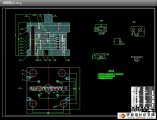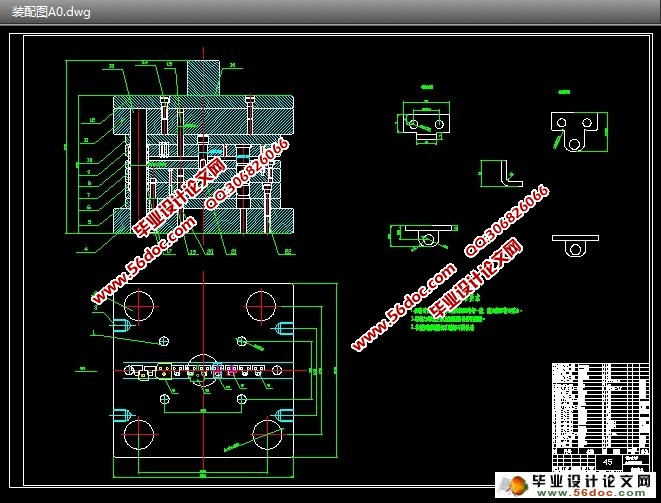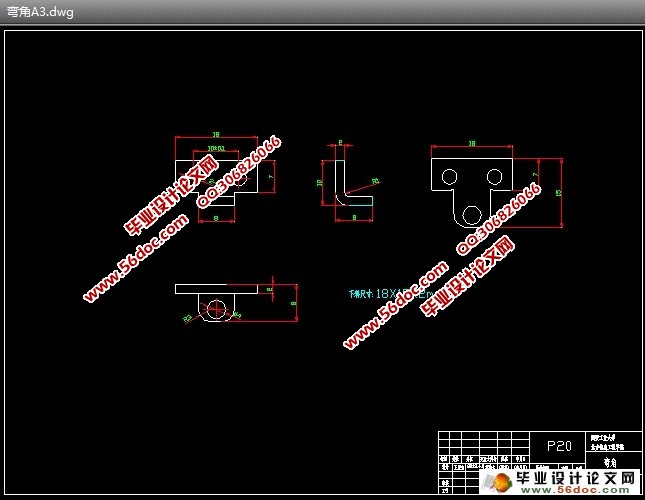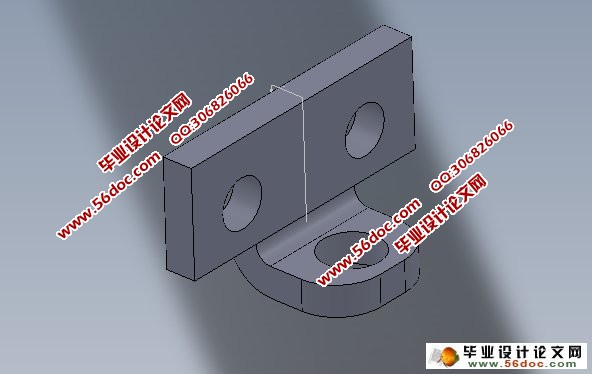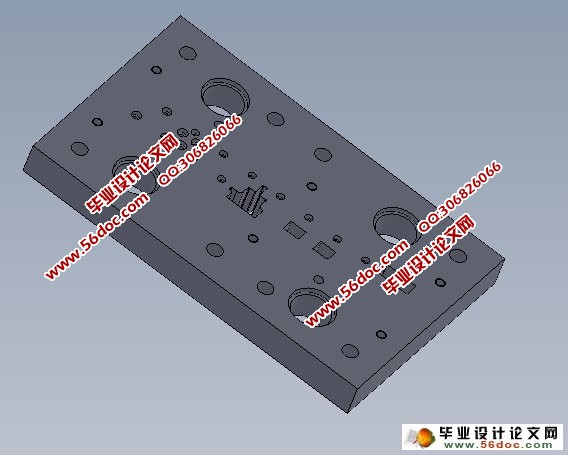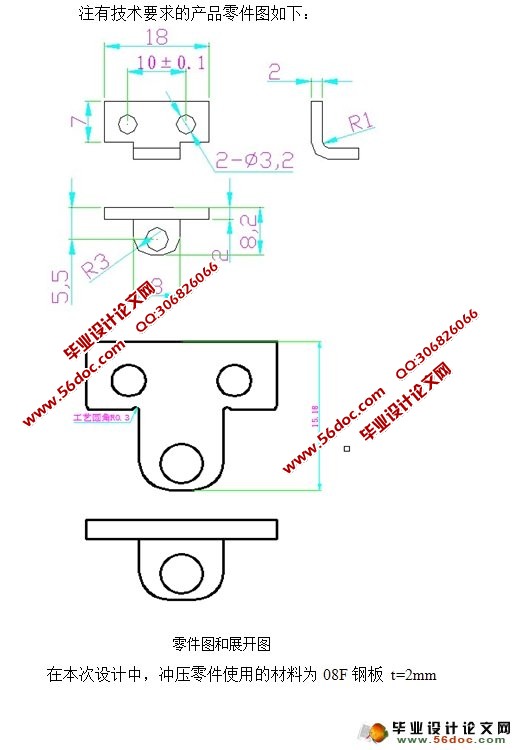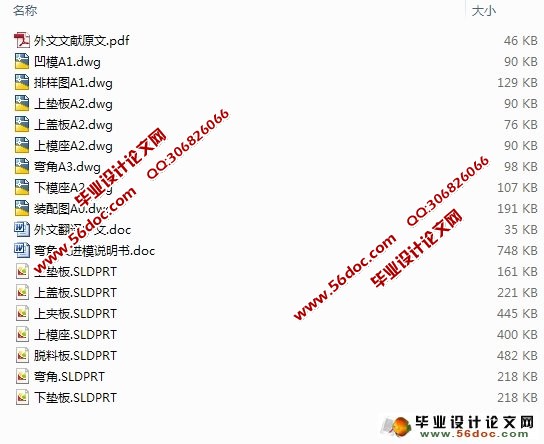筒形传感器外壳冲压模具设计(CAD,SolidWorks三维)
来源:56doc.com 资料编号:5D11660 资料等级:★★★★★ %E8%B5%84%E6%96%99%E7%BC%96%E5%8F%B7%EF%BC%9A5D11660
资料以网页介绍的为准,下载后不会有水印.资料仅供学习参考之用. 密 保 惠 帮助
资料介绍
筒形传感器外壳冲压模具设计(CAD,SolidWorks三维)(外文文献翻译,论文说明书17000字,CAD图8张,SolidWorks三维图7张)
摘要
冲压加工是现代机械制造业中先进高效的加工方法之一。它是利用安装在压力机上的模具,在常温或加热的条件下对板材施加压力使其变形和分解,从而获得一定形状、尺寸的零件加工方法。采用普通的冲压的模具生产较率低,且费用较高,经估算占冲压件总成本的30%~40%,甚至更高一些。根据工件特点选择采用级进模冲压生产以提高生产效率、降低生产成本。本次设计采用级进模冲压生产。本文对采用级进模冲压生产弯角的分析,计算以及具体方案做了介绍。
关键词:弯角;级进模;冲压
Cylindrical Sensor Housing Stamping Die Design
Abstract
The stamping is one of the modern machinery manufacturing state-of-the-art and efficient processing methods. It is installed in the press mold, and applying pressure to deform and decomposition of the plate under the conditions of room temperature or heated to obtain a certain shape, the size of the parts processing method. The ordinary stamping mold production is relatively low, and the cost is higher, the estimate accounted for 30% to 40% of the total cost of stamping parts, and even higher. According to the work piece characteristics of progressive die stamping production in order to improve production efficiency, reduce production costs. The design uses a progressive die stamping production. Analysis of progressive die stamping corner, computing, and specific programs is introduced.
Key Words: Corners; Progressive die; Stamping
目 录
1 绪论.......................................................................................................................1
1.1全面推广CAD/CAM/CAE技术.............................................................................1
1.2高速铣削加工........................................................................................................1
1.3模具扫描及数字化系统..........................................................................................1
1.4电火花铣削加工.....................................................................................................2
1.5提高模具标准化程度..............................................................................................2
1.6优质材料及先进表面处理技术................................................................................2
1.7模具研磨抛光将自动化、智能化............................................................................2
1.8模具自动加工系统的发展.......................................................................................2
1.9级进模的优缺点.....................................................................................................2
2 设计初始资料.......................................................................................................4
2.1技术要求...............................................................................................................4
2.2工件生产批量........................................................................................................5
2.3原材料规格及毛坯情况..........................................................................................5
3 分析冲压零件(弯角)的工艺性.......................................................................6
3.1冲压件经济性分析.................................................................................................6
3.2冲压件工艺性分析.................................................................................................6
3.3冲模制造精度的选择..............................................................................................6
3.4其他方面...............................................................................................................7
4 确定工艺方案及模具形式...................................................................................8
4.1排样.....................................................................................................................8
4.2工序的确定...........................................................................................................8
4.3搭边类型的确定....................................................................................................8
4.4卸料板的选择........................................................................................................9
5 工艺计算.............................................................................................................10
5.1毛坯工艺计算......................................................................................................10
5.1.1排样及搭边值的计算........................................................................................10
5.1.2步距的计算.....................................................................................................10
5.1.3条料宽度的确定...............................................................................................11
5.1.4材料利用率的计算...........................................................................................11
5.1.5板料的裁剪.....................................................................................................12
5.2冲压力的计算......................................................................................................12
5.2.1冲裁力计算.....................................................................................................12
5.2.2卸料力、推件力和顶件力计算..........................................................................13
5.2.3计算总冲压力..................................................................................................14
5.3确定压力中心......................................................................................................14
5.3.1压力中心.........................................................................................................14
5.3.2压力中心的计算..............................................................................................15
5.4凸凹模工作部分尺寸计算.....................................................................................16
5.4.1尺寸计算原则..................................................................................................16
5.4.2冲裁间隙的选择..............................................................................................16
5.4.3凸凹模刃口尺寸..............................................................................................17
5.5确定各主要零件结构尺寸(凹凸模的设计)..........................................................20
5.5.1凹模的结构设计与标准化.................................................................................20
5.5.2凸模的结构设计与标准化.................................................................................22
5.6初选冲压设备......................................................................................................23
6 模具强度校核.....................................................................................................24
6.1模具失效形式......................................................................................................24
6.2对冲裁部分的模具零件进行校核计算....................................................................24
7 压力机的选用.....................................................................................................25
7.1压力机的校核......................................................................................................25
8 模具零部件设计.................................................................................................27
8.1模具标准件的选择...............................................................................................27
8.1.1模架的选用.....................................................................................................27
8.1.2导向装置的确定..............................................................................................27
8.1.3模柄的选择.....................................................................................................28
8.1.4冲压加工时定位部分的设计.............................................................................29
8.1.5卸料形式的确定..............................................................................................29
8.1.6导料装置的确定..............................................................................................29
8.2模具材料的选用...................................................................................................30
9 模具的装配.........................................................................................................31
10 技术经济性分析...............................................................................................32
10.1冲裁件的经济性分析..........................................................................................32
10.2模具的经济性分析..............................................................................................32
11 结论...................................................................................................................34
参考文献...............................................................................................................35
致谢.......................................................................................................................36
|
